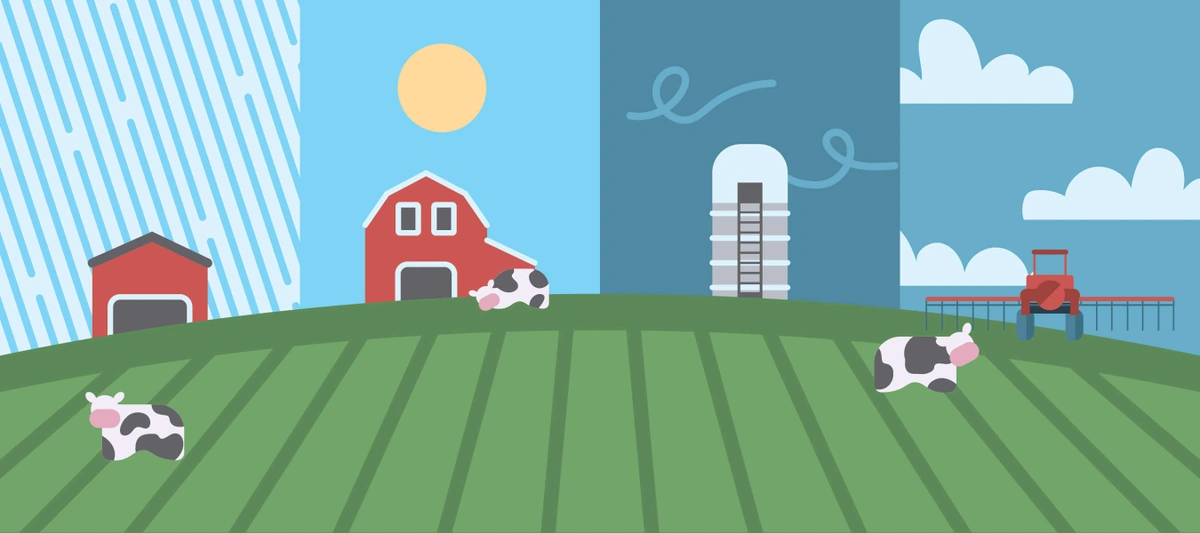Carbon farming practices work everywhere: Approach vs Application
by Ryan Stockwell
When thinking about soil health, begin with the principles, then adjust application for your area. Don’t get hung up on the application looking different in different areas.

It seems you can’t open an ag journal or newspaper lately without seeing an abundance of articles about soil health or carbon farming practices, especially no-till and cover crops. And for a good reason… study after study reinforces what we already know about these practices—that they reduce costs, improve profitability, and build soil productivity. And yet, when it comes to implementing these practices, many farmers get hung up on the specifics mentioned in these articles, or one bad cover crop experience from a neighbor, and conclude soil health or carbon farming practices don’t work in their area. We all know the impact local soils, topography, climate, and crop needs have on agronomic decisions. So how should we approach thinking about carbon farming practices?
Much like any big decision, start with the principle or value, and then adjust for the unique situation. Keep in mind these simple principles:
- Keep the soil covered as much as possible (keep plant residue on the surface)
- Leave soil as undisturbed as possible (minimize tillage)
- Keep living roots in the soil as long as possible (cover crops to keep things green for most of the year)
- Provide diverse plant matter for soil organisms (lengthen crop rotation and diversify cover crops)
These principles, no matter the climate, soil type, or dominant crops, will all help build healthier soils that reduce operating expenses, improve resilience to challenging weather and agronomic problems, and can qualify growers to earn revenue from generating carbon credits.
Use the Soil Health Optimizer to gain insights on how to apply soil health principles for your climate and soil type. Log in or create your account to access the tool.
Consider these principles as foundational to building healthy soil. As with any important decision, like what occupation to pursue or how to raise children, we start with principles. From there, the unique situation (like access to education or a child’s behavior) will determine how the principles are ultimately applied.
That means while a farmer in western Kansas and another in northern Wisconsin both adhere to the principle of providing living roots as much as possible, how each accomplishes that principle will get heavily influenced by their personal context (hot and dry in western Kansas and cool and wet in northern Wisconsin). Both may have the goal of improving soil structure, one to infiltrate enough moisture to help crops survive drought longer and the other to improve infiltration to drain excess moisture for better crop health and field access, but how those get applied will differ. What doesn’t change is the principle of building soil health to increase your farm’s success, both in the near term and for future generations.
To get carbon practice guidance unique to your farm, log into your free Carbon by Indigo account and start chatting with a carbon farming expert.
By: Ryan Stockwell, Indigo Grower Engagement Senior Manager and Wisconsin farmer
This article may include information from third-party sources or other information that Indigo may not independently verify. Carbon quantification methods, processes and understandings are in their nascency and subject to change and continuous development. The information contained herein is for general informational purposes only and may be based on generally applicable assumptions that may not be applicable to any individual operation. Actual results may differ among growers and farms based on a large number of variables. Each operation should independently consider the financial implications and all potential risks and benefits of the use of any agronomic practice. Any payments under Carbon by Indigo are subject to multi-year vesting and are contingent on continued long-term maintenance of regenerative agricultural practices and soil carbon levels. All Carbon Credits generated are subject to buffer pool holdbacks required by third-party crediting; participants will not receive payments for such holdback. Neither Indigo nor its representatives or affiliates makes any representations, warranties or guarantees as to any specific outcomes (agronomic, financial or otherwise) in connection with any recommendations, calculations or predictions. Terms, conditions, limitations and eligibility requirements apply. See program agreement for additional details regarding Carbon by Indigo.
Farmers like you are getting paid to implement practices that improve soil health. With skyrocketing input costs, see how covers help.
You might also be interested in:
Neither Indigo nor any of its affiliates makes any representations, warranties or guarantees as to any specific results or outcomes, including, without limitation, with respect to soil health outcomes or any minimum amount of greenhouse gasses sequestered or number of carbon credits generated. Participation in Carbon by Indigo is subject to the terms, conditions and limitations of the program contained in the applicable enrollment agreement. Any payments under Carbon by Indigo are subject to multi-year vesting and are contingent on continued long-term maintenance of regenerative agricultural practices and soil carbon levels. All Carbon Credits generated are subject to buffer pool holdbacks required by third-party crediting; participants will not receive payments for such holdback. Not available in all areas.
500 Rutherford Ave, Boston, MA 02129 | 844.828.0240 | info@indigoag.com